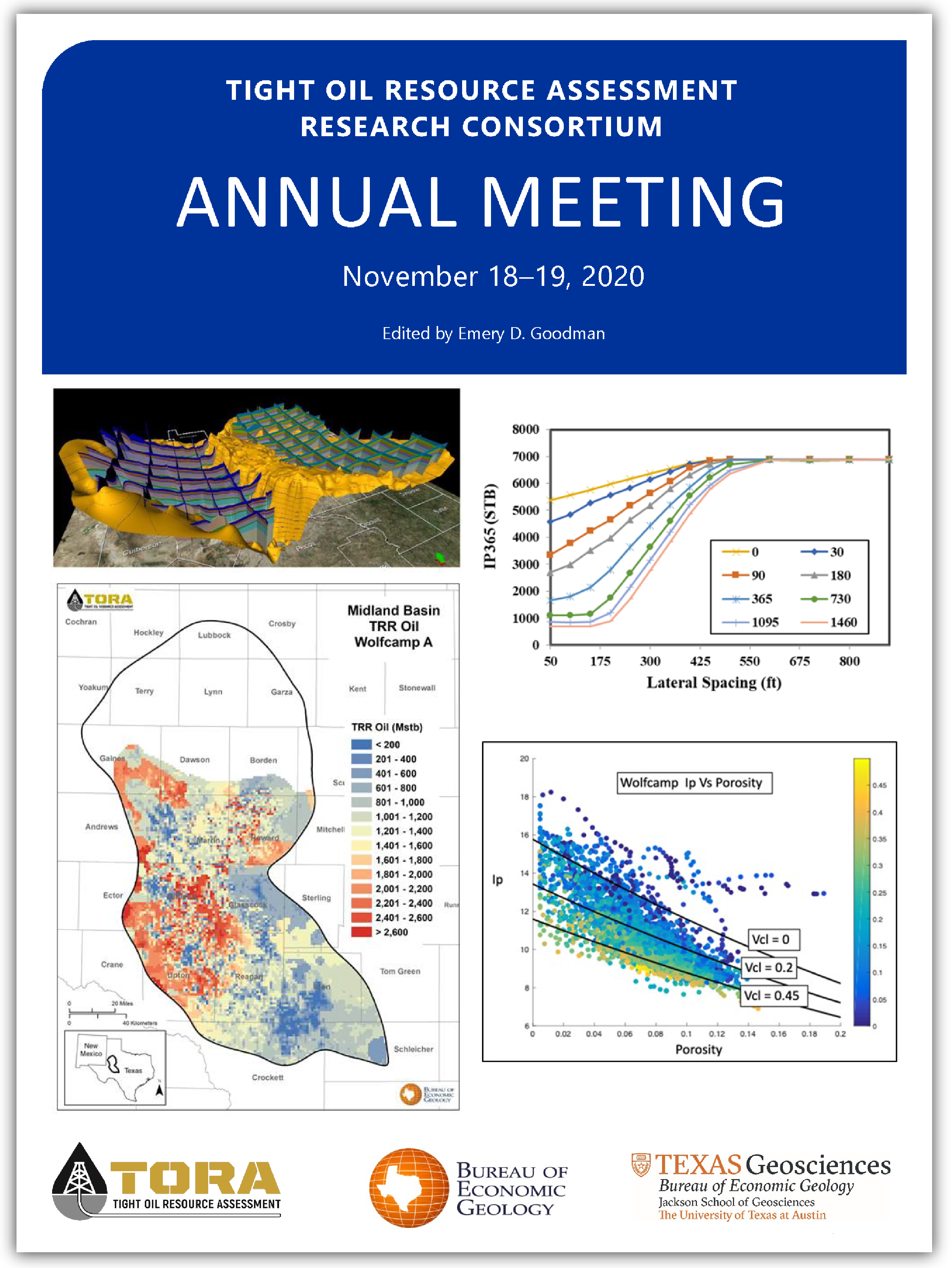TORA Holds Annual Meeting

The Bureau of Economic Geology’s Tight Oil Resource Assessment (TORA) project recently held its annual meeting in November. Approximately 120 representatives of sponsor organizations attended virtually from the U.S., China, Colombia, Germany, and France. The meeting included 24 live presentations and a virtual core description workshop.
Presentations covered geoscience, reservoir engineering, petrophysics, economics, data analytics, and machine learning. The meeting focused on the Permian Basin but included concepts and methods applicable to all unconventional plays, including formation evaluation, geomechanical and spacing controls on well interference, pore pressure analysis, estimated ultimate recovery (EUR) modeling using a two-phase flow model, and the use of seismic inversion to characterize tight oil reservoirs from newly-acquired 3D datasets.
For the first time, TORA expanded its productivity analysis to the entirety of the Delaware Basin, with the highest projected first year productivity of Wolfcamp A wells in southwestern Lea County, New Mexico, and northern Loving County, Texas. The Third Bone Spring Sand was reported to have had higher median projected first year productivity of undrilled wells than the Wolfcamp A and B reservoirs.
Technically recoverable oil for the Delaware Basin’s Third Bone Spring Sand and Wolfcamp A and B plays—plus the Midland Basin’s Wolfcamp A and B plays—totals some 75 billion barrels, of which over 3 billion barrels of oil has been produced to date.
For more information about the Tight Oil Resource Assessment research consortium, and how your organization can participate, please contact Emery Goodman.